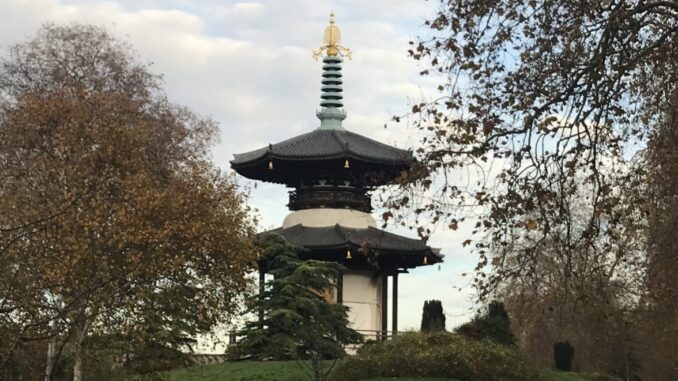
In 1829 the Duke of Wellington, the then Prime Minister, fought a duel with the Earl of Winchelsea on Battersea Fields, an area of common land south of the Thames, on the opposite bank to the Royal Hospital Chelsea.
This area is now Battersea Park, and close to the spot where the duel took place stands the London Peace Pagoda, a Buddhist stupa or temple that was built in 1985.
Some 35.5m high and made of wood and concrete, the stupa was the gift of the Japanese Nipponzan-Myohoji Buddhist order, with 50 volunteers from the order living and working in the park, to clear the site and build the temple. On the four faces of the building are gilded bronze statues, each of which symbolises a key event in the life of the Buddha – birth, contemplation and enlightenment, teaching and death.
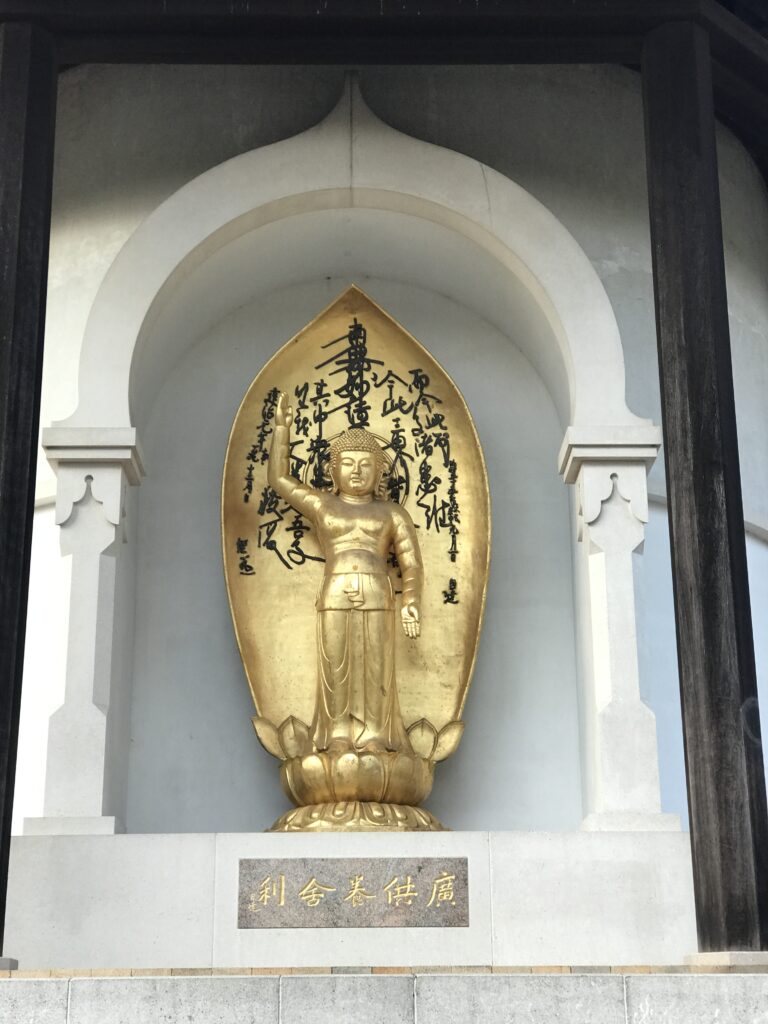
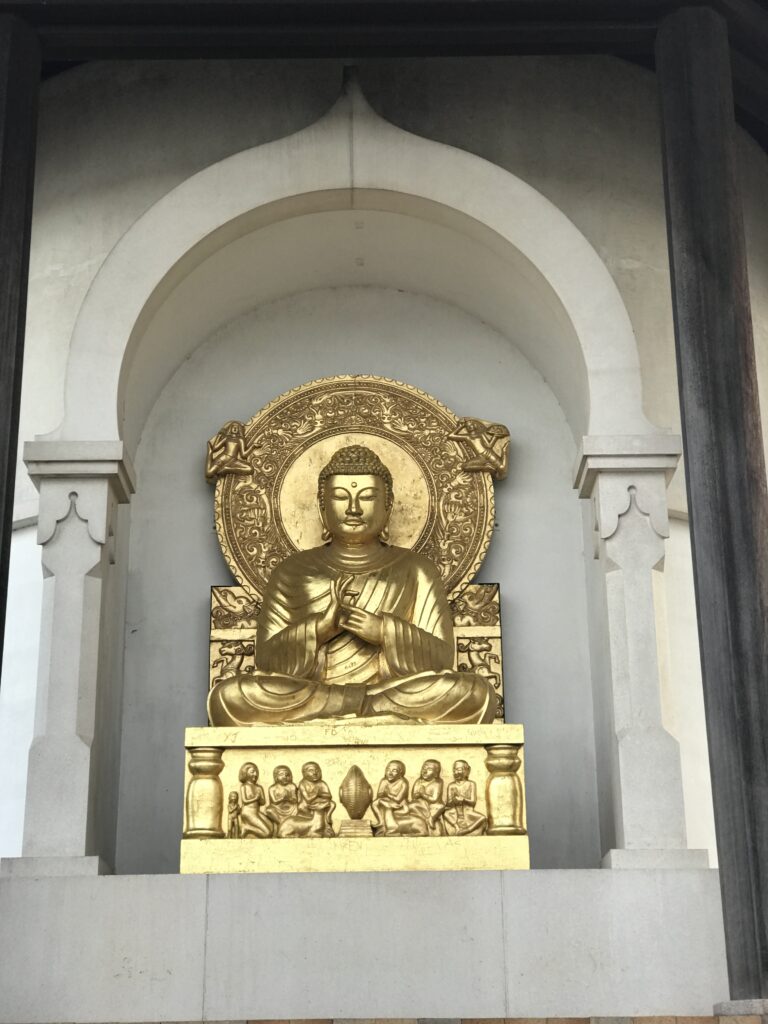
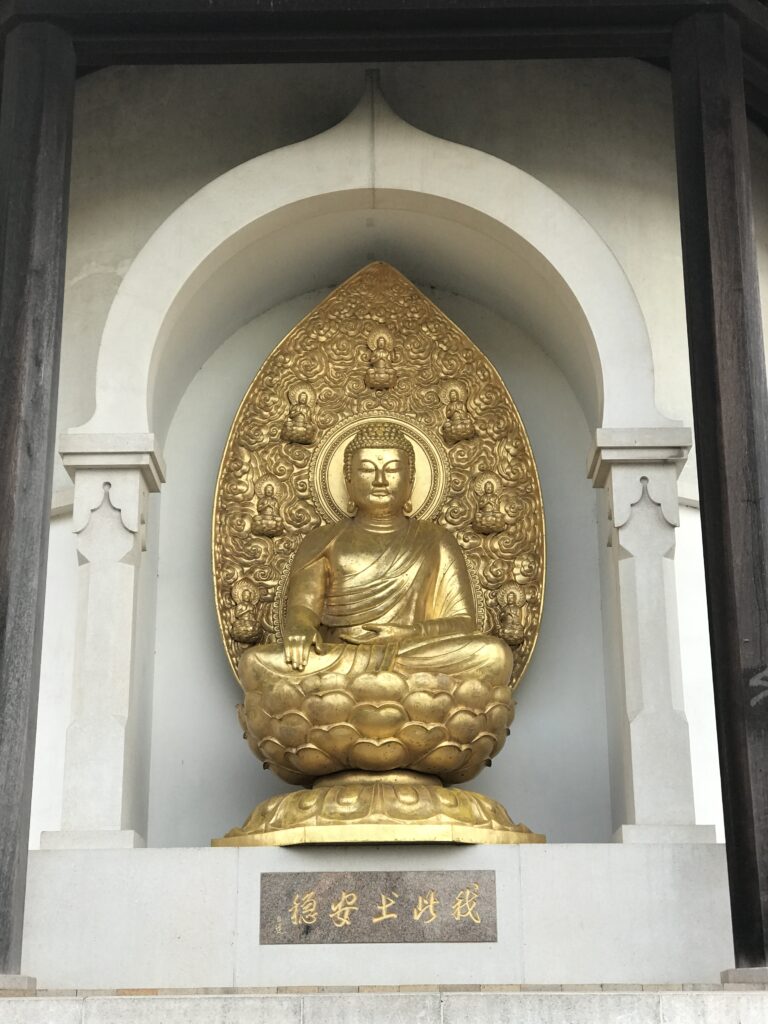
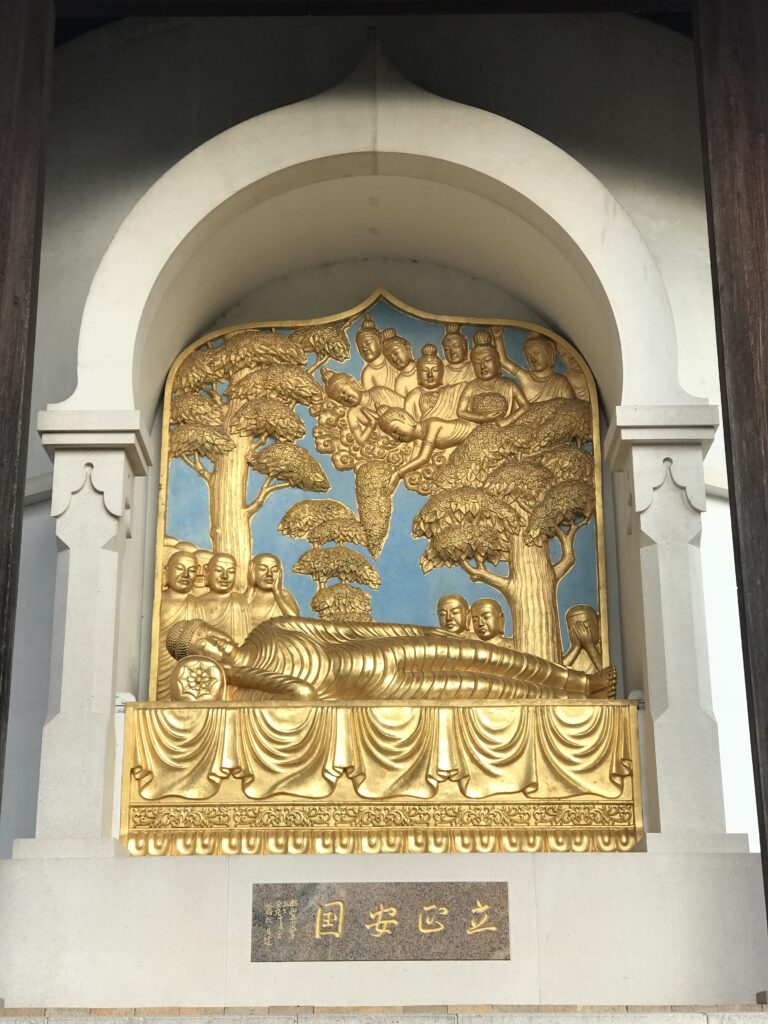

The idea of constructing peace pagodas was that of the Nipponzan-Myohoji’s founder, Nichidatsu Fujii. An advocate of pacifism, Fujii built the first peace pagodas in Hiroshima and Nagasaki just after WW2. There are currently 80 of them around the world.
The construction of Battersea pagoda was approved as part of the Greater London Council’s ‘Peace Year’ in 1984, and was one of the last acts of the GLC before it was abolished as a result of Margaret Thatcher’s 1985 Local Government Act.
